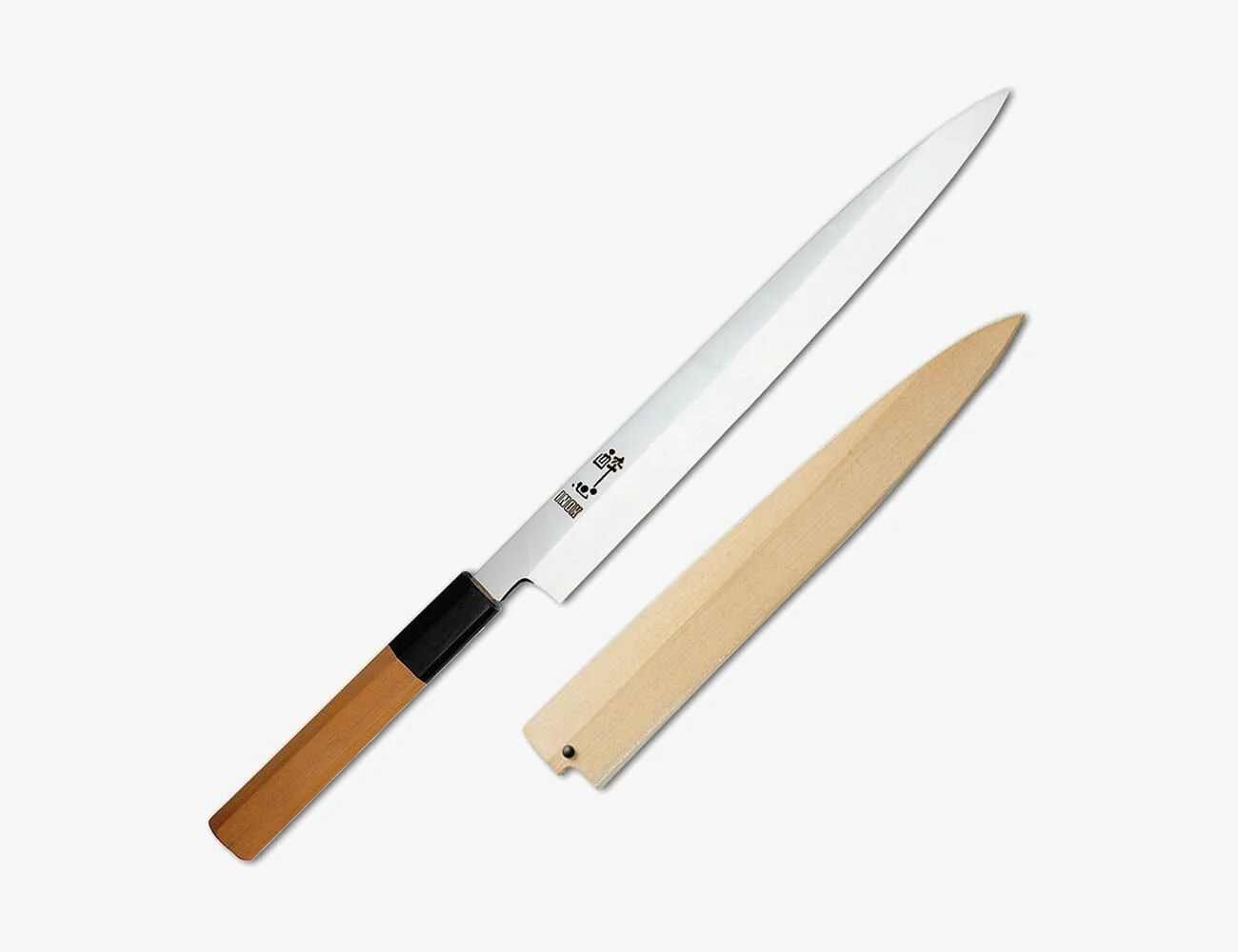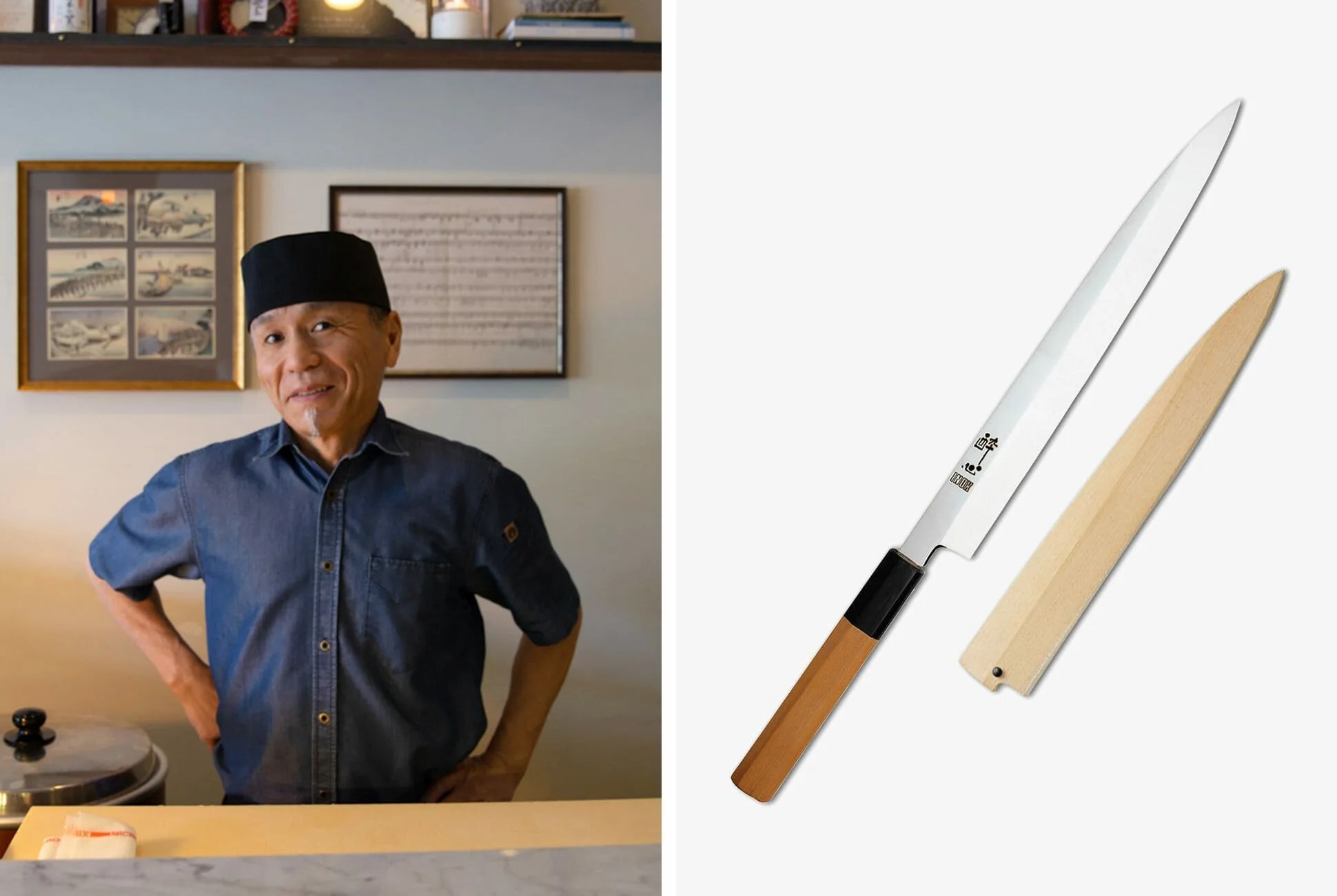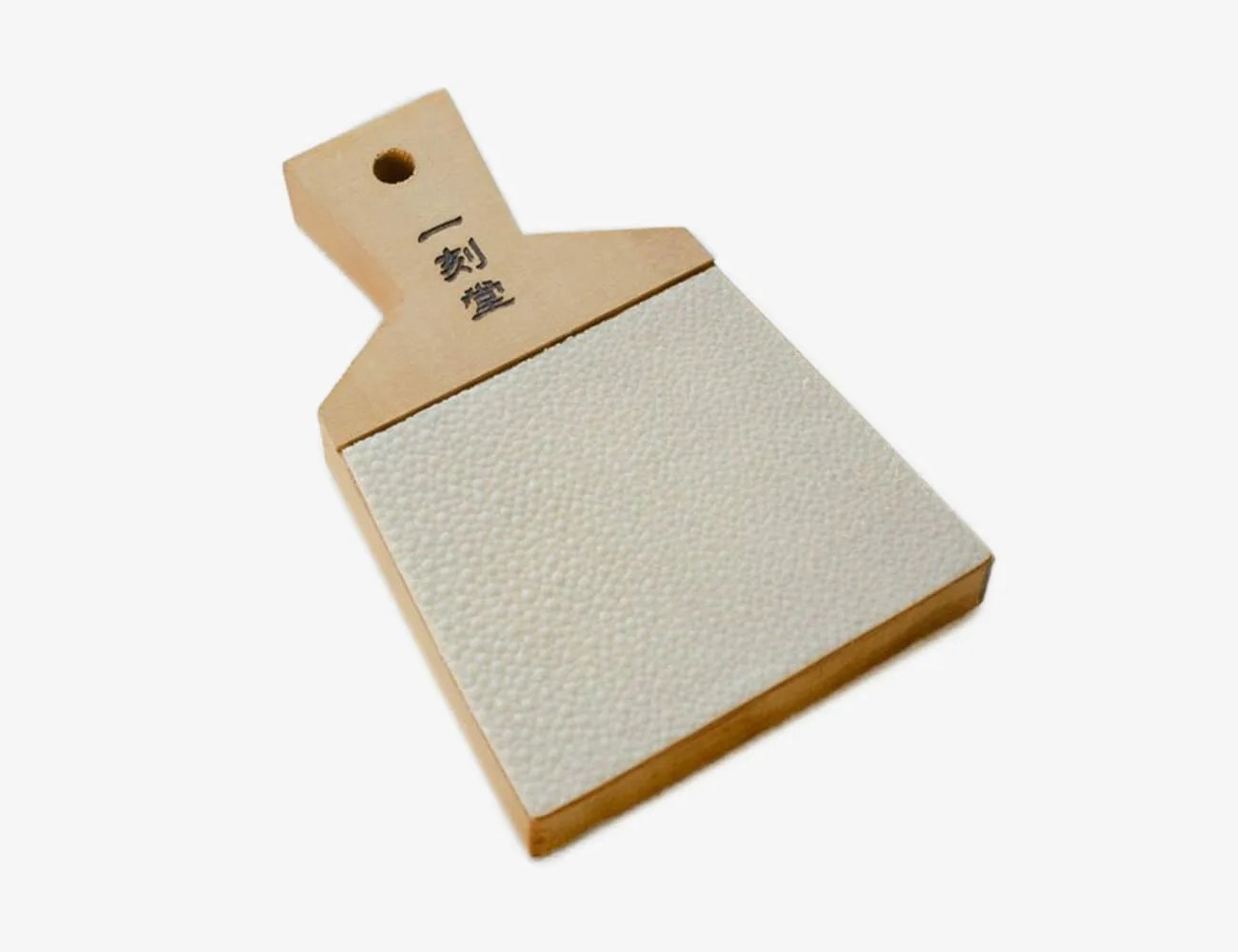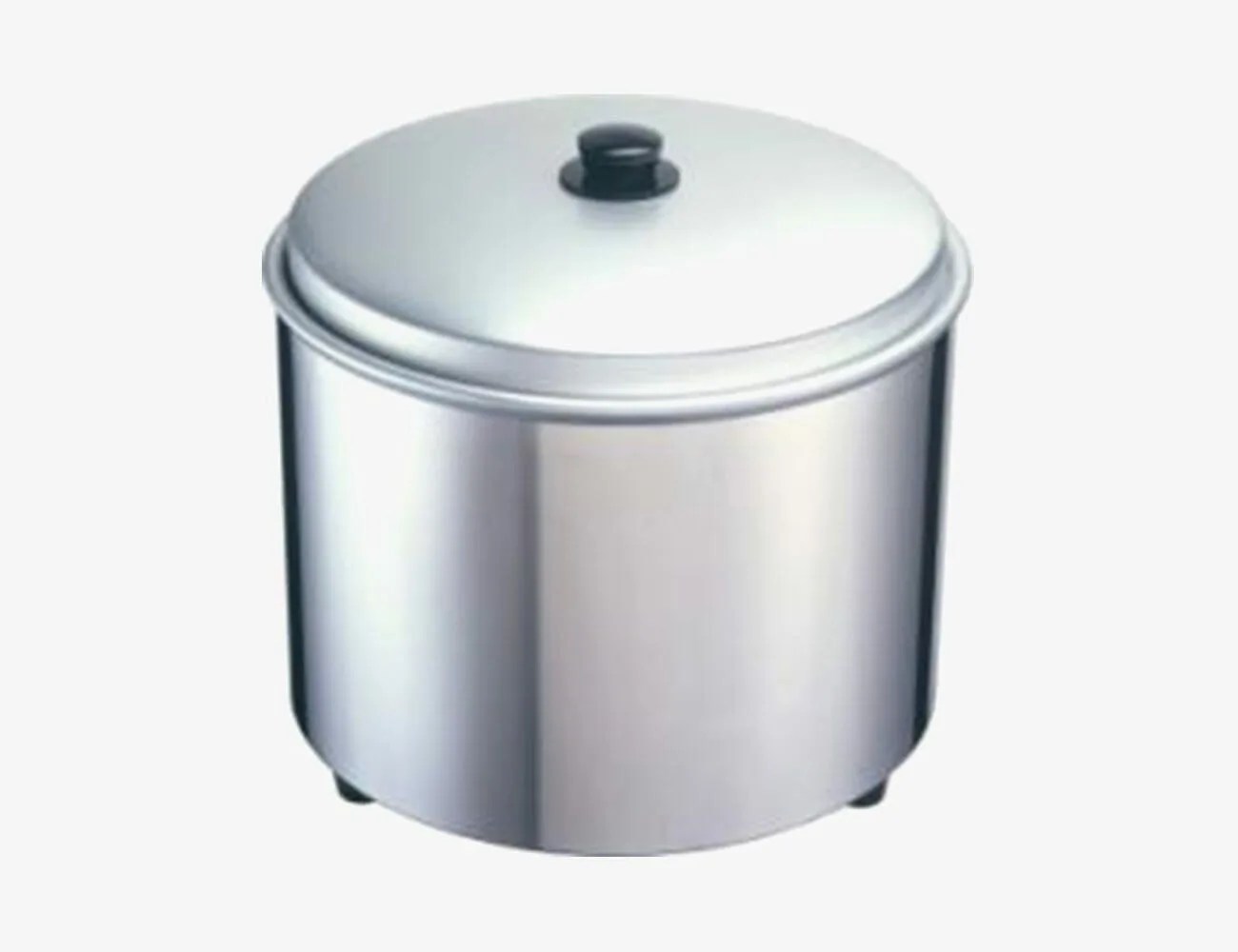This is Chef’s Staples, where professional chefs dish on the gear they couldn’t cook without. This week: Chef Kiminobu Saito of Sushi Note in Los Angeles, CA.
Off Ventura Boulevard in Los Angeles’ Sherman Oaks neighborhood, Chef Kiminobu Saito’s sushi operation is both extremely serious and not-so-serious. Saito’s Sushi Note, open summer of 2018, manages to blend a hang out atmosphere with millimeter-perfect cut sushi, a wicked wine list and what are essentially rice tater tots (topped with fresh fish, naturally).
But don’t mistake Chef Saito’s whimsical restaurant for a casual approach to Japan’s most famous cuisine — he has been at this for decades, and his gear shows it. Namely, his knife, which he bought more than 20 years ago and is still going strong (he sharpens it weekly). From an indestructible knife from a famous bladesmith to a sharkskin wasabi grater, these are the things Chef Kiminobu Saito couldn’t live without.
Honyaki Yanagi Knife

“My favorite knife is my Honyaki Yanagi. I purchased it in 1997 in Japan. It’s made using the same technique used with Japanese swords. You can even see the impressions left by the heat and pounding process. My father had a passion for swords and ceramics, and I grew up with an appreciation for this style of craftsmanship. It’s the knife I treasure the most, and I use it as my main knife. I use it for sushi, sashimi and especially for breaking down large fish and turning them into smaller filets. As for care, I keep it very simple; I sharpen all my knives once a week, spending about 30 to 40 min on each knife. Then I keep them dry and in a case when not in use to avoid rust and dings to the knife.”




